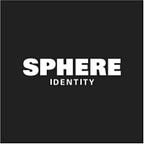A look at the future of employee onboarding
The labour market these days is dynamic, it enables businesses to stay relevant and competitive. HR teams are ready to build robust workforces, but there are barriers along the way.
58% of organisations admit that their employee onboarding processes are more about paperwork than people, and 72% of HR professionals say that they adapt their strategy reactively rather than proactively.
Real HR should not be about paperwork and endless administration processes. HR departments that centre their employee interactions around it end up paying with poor work culture.
There’s scope for immediate improvement, but where do companies start when they rethink their employee onboarding?
The Evolution
The paperwork that onboarding generates has been a longstanding HR problem. In the pre-internet era, individuals were onboarded manually, where Human Resources would mail out offer letters and other related documents.
The letters had to be received, filled out and sent back — a time-consuming process, especially when there were mistakes or missing information. Multiple elaborate steps were common and the technology for alternatives did not exist.
In the mid 90s, the internet provided the potential for speed and efficiency. HR departments everywhere were equipped to receive and store employee documents quicker and better — and save both time and space. But it was soon discovered to be only partially beneficial.
Teams still had to contend with entering information into payroll and contract databases. This resulted in poor user experience as well as bad data quality. Administrative employee onboarding continued to be a multi-step process and HR software companies had more work to do.
“Automation needs to do more than mirror manual ways of doing things.“ — Katherine Noall
During the 2000s, HR software providers developed ‘Self-service’ systems. Here, the candidates — as opposed to the HR department — were required to manually enter details and upload their ID documents into the company’s centralised platforms. HR teams were finally free to focus on talent management and organisational development. Or were they?
Since the nature of data entry had not essentially changed, the risk of poor data quality remained. Employees would have to go through a process of unconnected steps, making the possibility of errors all the more likely. And when they did occur, as always, HR was required to follow up.
These apparent developments in HR onboarding were not ‘real’ innovations. Changes in employee onboarding either came off the back of technological advancements or with the transfer data responsibility.
With time came new trends and thinking, and therefore, the potential for innovation. Scan-and-go or ‘one-click’ technologies put user experience first. HR software made it possible to conceive a future with minimum paperwork.
The Future
New employees have an average of 41 administrative tasks to complete — filling out forms, setting up accounts, device configuration and so on. Errors and missing information add to the delay, making onboarding a slow, elaborate affair. The task of improving HR proactivity must begin with employee onboarding.
An onboarding app, with built-in Optical Character Recognition, removes the risk of bad data. This technology scans an identity document, extracts relevant information and seamlessly sends it to the authorised party. Human error is eliminated, data completeness is inbuilt.
In the future, HR software must be able to automate needless processes. Innovative HR companies such as Workday and Bamboo HR, acknowledge the need for this when building their software.
The ideal employee onboarding solution decreases paperwork and removes any scope for error and friction. With the resources available, the transfer of information and identity documents can happen through the click of a button instead of forms and photocopies.
By streamlining routine processes, businesses can have the potential to grow as dynamic workplaces. Human Resources can then focus on the things that truly matter — recruitment, training and team building.
One-click onboarding, the next stop for HR solutions.
